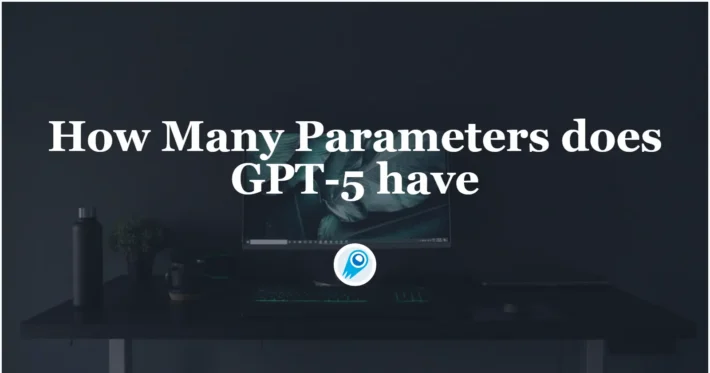GPT-6 Is Coming Soon — What Will It Look Like?

The AI world is buzzing: OpenAI is actively developing the successor to GPT-5 (often referred to in press and social posts as “GPT-6” or jokingly “GPT-6-7”), and competing labs — notably DeepMind/Google — are readying their next major upgrade (Gemini 3.0). Taken together, the signals say one thing clearly: a new generation of large models that is more agentic, multimodal, and integrated into product and enterprise stacks is on the horizon.
GPT-6 is coming soon. What features will it have?
The conversation in public and industry channels over the past year has converged on a single expectation: the next major iteration after GPT-5 (GPT-6” in press and community chatter) will be defined less by a single accuracy metric and more by features that make models persistently useful, personalized, and reliably agentic. That expectation rests on three concrete trends we can already see: (1) system-level model routing and hybrid model families in GPT-5; (2) industry chatter and company signals that emphasize memory, personalization and agentic workflows; and (3) infrastructure commitments from major cloud partners that make higher compute, lower-latency experiences realistic.
1. Long-term memory and personalization
One of the most frequently cited likely additions in GPT-6 is a robust, privacy-aware long-term memory system. Unlike short single-session context windows, this aims to let the assistant recall user preferences, ongoing projects, and enterprise context across sessions while giving users transparent controls over what is stored and why. The industry framing around “memory + personalization” follows from the push to make assistants feel like long-lived collaborators rather than stateless question-answerers.
2. Agentic capabilities and task automation
“Agentic” behavior as a central upgrade: GPT-6 is expected to break complex goals into multi-step plans, chain tools and APIs autonomously, and either complete tasks end-to-end or hand off intermediate artifacts to users. That’s a qualitative jump from being an assistant that suggests next steps to an assistant that orchestrates them — e.g., plan research, run a search, summarize results, write a draft, and iterate. The move toward agentic AI is visible in OpenAI statements and in how newer models are being evaluated on “closed-loop” tasks rather than isolated completions.
3. Multimodality extended to realistic video and continuous sensors
Where GPT-5 advanced multimodality (text + images + code + audio), GPT-6 is widely expected to add higher-fidelity video reasoning, continuous sensor inputs, and temporal understanding for tasks that require watching, summarizing, or operating on streams (meetings, security camera feeds, device telemetry). This will be crucial for any real-world agent that needs to act in time and coordinate across modalities.
4. Fine-grained customization & domain experts
The trend toward specialization (developer toolkits, verticalized models) will accelerate. GPT-6 will probably offer more accessible ways to load or train domain experts (legal, medical, scientific) that run under a unified interface but enforce domain-specific safety and verification layers. This addresses both enterprise demand for accuracy and regulators’ demand for provenance.
5. Efficiency, latency, and on-device or edge-assisted modes
Performance engineering will remain a priority: lower latency for “conversation-grade” responses, dynamic routing between lightweight and heavy reasoning models, and more efficient inference that enables hybrid edge/cloud deployments. The goal: make high-capability behavior feel instant while preserving the option to escalate to deeper thinking when needed.
6. Better reasoning, factuality, and “thinking” modes
OpenAI has repeatedly said it learned lessons from GPT-5’s rollout and aims for GPT-6 to be a notable quality jump rather than incremental. That means improved chain-of-thought reasoning, refined calibration (confidence that matches correctness), and explicit “thinking” or deliberation modes that surface intermediate steps the model used to arrive at answers — both to improve transparency and to help human oversight.
What architecture will GPT-6 use?
Predicting the exact architecture months before release is speculative — but reasonable inferences follow from the architectural trajectory OpenAI and other labs have signaled. GPT-6 will most likely be a system of models rather than one monolithic model, with improvements at three layers: model routing, retrieval and memory systems, and modular expert components.
Will GPT-6 be a scaled transformer, or something new?
The industry trend is hybrid: large transformer backbones remain foundational, but they are increasingly paired with modular subsystems — retrieval systems, grounding agents, tool orchestrators, and possibly neuro-symbolic components. GPT-6 will combine a transformer core with heavy investment in retrieval-augmented techniques, RLHF-style fine-tuning, and specialized adapters for modality handling (vision, audio, video).
Modular, sparse, and efficiency-aware design
To hit both scale and efficiency targets, GPT-6 may adopt mixture-of-experts (MoE) layers, sparsity, and conditional compute so the model can dynamically route tokens through lightweight or heavyweight submodules. This gives better cost/performance and allows specialized experts (e.g., medical expert, code expert) to be invoked only when needed. Several technical previews in the ecosystem have pointed in this direction as the practical way to increase capability without unsustainable compute costs.
How does GPT-6 compare to Google’s Gemini 3.0?
With the release dates of GPT-6 and Google’s Gemini 3.0 so close, and both companies recently releasing information about their latest AI models, competition between these two top-tier models is inevitable.
Comparing GPT-6 and Google’s Gemini 3.0 (as described by industry previews) requires separating confirmed product facts from market speculation. Google has signaled a next-generation Gemini family iteration focused on stronger reasoning and agentic capabilities; timelines and specifics vary across reports.
Capability posture
Both vendors aim to deliver deeper reasoning, broader multimodality, and agent-style automation. Historically, OpenAI has emphasized product integration (ChatGPT platform, APIs, developer tooling) while Google has emphasized model infrastructure and search/assistant integration. In practice:
- OpenAI (GPT-6 expectation): emphasis on memory + personalization, model routing, and enterprise-grade agents with strong audit/safety tooling. ([OpenAI][1])
- Google (Gemini 3.0 expectation): expectations point to improvements in multimodal reasoning and developer preview programs tying Gemini to Google Cloud and search ecosystems. ([Medium][5])
Differentiation factors
- Integration with existing stacks: Google’s strength is being able to embed Gemini into Docs, Workspace and search experiences; OpenAI’s strength is platform focus (ChatGPT + API + ecosystem of plugins).
- Reasoning and chain-of-thought: Both projects push advanced reasoning; OpenAI emphasizes iterative improvement from past rollouts, while DeepMind’s Gemini emphasizes “deep thinking” modes. Expect tight competition on benchmarks where multi-step reasoning matters.
- Data and grounding: both will emphasize retrieval and grounding, but differences may arise in default privacy models, enterprise controls, and how memory is surfaced.
- Developer ergonomics: Context length, performance for specific tasks, and most importantly, cost of use are the parts that developers care about most.
Market implication
Competition will be healthy for customers: multiple vendors racing to ship memory, agentic workflows, and multimodal experiences will accelerate feature delivery but also increase heterogeneity. Let’s keep an eye on the release of these two models. CometAPI will integrate the latest models and release the latest comparisons in a timely manner.
Final thoughts
The next generation of foundation models — whether we call it GPT-6, GPT-6-7, or something else — represents more than incremental scale: it’s the convergence of persistent memory, agentic orchestration, and multimodal understanding in systems that developers and enterprises can productize. Sam Altman’s public signals, OpenAI’s enterprise posture, and the competitive pressure from projects like Gemini 3.0 together create a high-stakes environment where technical progress must be matched by careful rollout and governance.
CometAPI promises to keep track of the latest model dynamics including GPT-6, which will be released simultaneously with the official release. Please look forward to it and continue to pay attention to CometAPI. While waiting, you can pay attention to other models, explore the model’s capabilities in the Playground and consult the API guide for detailed instructions. Developers can access GPT-5-Codex API ,GPT-5 Pro API through CometAPI, the cometAPI’s latest models listed are as of the article’s publication date. Before accessing, please make sure you have logged in to CometAPI and obtained the API key.CometAPI offer a price far lower than the official price to help you integrate.
Ready to Go?→ Sign up for CometAPI today !
If you want to know more tips, guides and news on AI follow us on VK, X and Discord!


